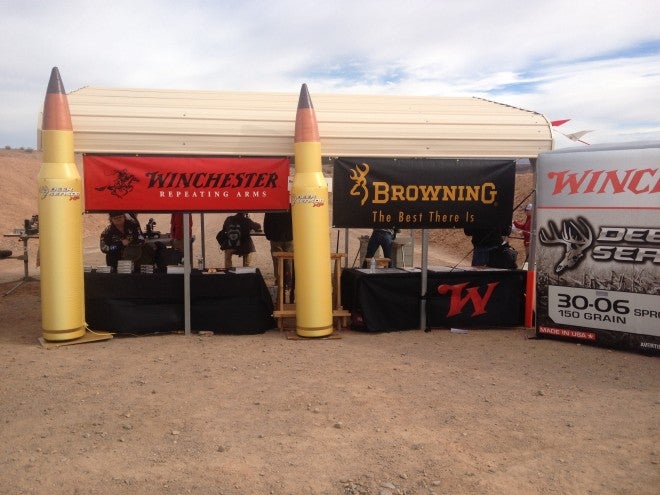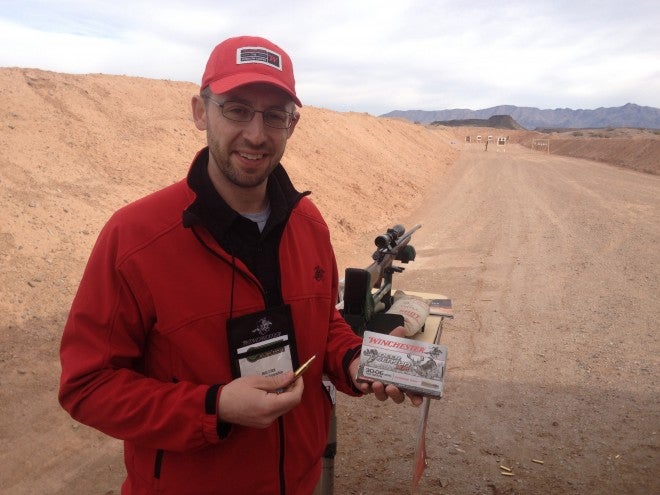Winchester Deer Season XP – First Ever Deer-Specific Hunting Bullet
Russ Chastain 01.20.15

When it comes to deer hunting bullets, expansion is usually the name of the game. Some of the most widely-used hunting bullets were designed 50 and 60 years ago, when deer hunting was much less prevalent than it is now (simply because we didn’t have very many deer). At the SHOT Show 2015 Range Day, I had the chance to talk about it with Winchester Ammunition‘s Mike Stock.
These days, deer hunters as a group wield the most sway with major manufacturers of rifle ammo. We buy the most ammo and demand performance from it. If it fails, we tell everyone about it and buy someone else’s product.

Enter Winchester’s R&D department and a new approach to a hunting bullet.
First, they looked at expansion. For most bullets to expand beyond their caliber size, which is necessary for bottleneck rifle cartridges due to their small diameter, they generally have to do a good bit of movement. Picture a hollow point hunting bullet and think about how far that point needs to expend before it “grows” to the same size as the bullet’s caliber–or larger.
Winchester’s answer is a longer polymer tip that not only streamlines the bullet, but also allows the leading edge of the bullet’s jacket to be considerably larger than most. It takes very little expansion for the bullet to open up to larger-than-caliber size and often allows bullets to expend all of their energy inside the deer.
Mike explained that the Deer Season XP bullet had been used to shoot more than 200 deer with very good results. Sometimes they exited, sometimes they didn’t. Most often, bullets that did not fully pass through were recovered against the off-side hide of the deer. “Entrance wounds,” he said, “very often looked like exit wounds made with most bullets.”
Due to the designed-in expansion, which naturally inhibits penetration, I asked if this bullet could be depended on to reach the vitals on quartering shots. If, for instance, a deer was quartering away, could this bullet be trusted to penetrate the guts and diaphragm in order to reach the vitals? The answer was yes, and he cited a deer that was shot in just that way with a Deer Season XP bullet.
If the bullet were to hit the off-side shoulder after such a shot, though, expect it to stop there.

So far, this new ammo sounds pretty good. But the best part is, making a bullet like this means less working of the metals. The core and jacket are easy to form and require less work. This means the bullets are more consistent (the more you work metal, the more inconsistencies creep in) and more affordable.
That’s right – Deer Season XP ammo is in Winchester’s “gray box” line, which means you can get this newly-developed hunting ammo for about $22, roughly the same price point as the cheaper ammo we’ve all been shooting already.
Asked if he designed the bullet, Mike Stock responded, “I did not. I have engineers to do that.”